In our last class, we did an exercise where we cut out letters and mounted them on a white or black background. The purpose was using white space and how much we could show the letter. Coincidentally, I got “W”.
On June 23rd, I attended The Art of VR event, held at Sotheby’s. It was billed as “A 2 day curated VR exhibition featuring: Studio premieres, theatrical & brand case studies, studio exhibitions, hands-on demonstrations.” I signed up through Eventbrite.
Virtual reality has certainly advanced from Second Life. Now there are headsets and immersive devices. The tickets were somewhat expensive but I went to the event, anyway, because I didn’t have that much experience with virtual reality; I thought it would be a good way to jump in. I spent time trying out VR at the different booths, then spent time listening to the talks, which were pretty good.
Many works were commercial, intended to demonstrate the graphics capabilities of a type of computer, to promote a film, or for some other commercial purpose. In my opinion, VR for entertainment purposes automatically comes across as a bit insincere, unless the provenance of the work — where it comes from, how it was produced, who produced it and why — is known because it can help the audience get over their skepticism.
There were also a number of artworks, and so far I think it works best for art experiences. The mechanics of the experience are incredibly intimate, yet it remains very public – which describes how art is experienced, as well. But, trying VR can be an intimidating activity. You have to get over feeling embarrassed for looking stupid with these giant geeky goggles on your face while other people are watching. And, as a panelist later mentioned, VR can be clunky and clumsy, even in an artistic setting.
Despite my initial embarrassment, I participated as much as I could. I enjoyed the experience and learning about VR.
I’ll admit that I initially wasn’t compelled to visit the floor where the discussion panels were being held. But once, I did I was very impressed. The president of the VR Society led at least 2 panels I listened to; he’s a very good moderator. The two discussions that impressed me most were a discussion on medical uses of VR and a discussion about a cinematic experience, called “Lincoln in the Bardo”.

One of the discussion panels was about medical uses of VR. Overall, this was the most impressive topic discussed or demonstrated for me.
Anyway, the medical talk was very innovative and I’m glad to see this new technology being used in such important ways.
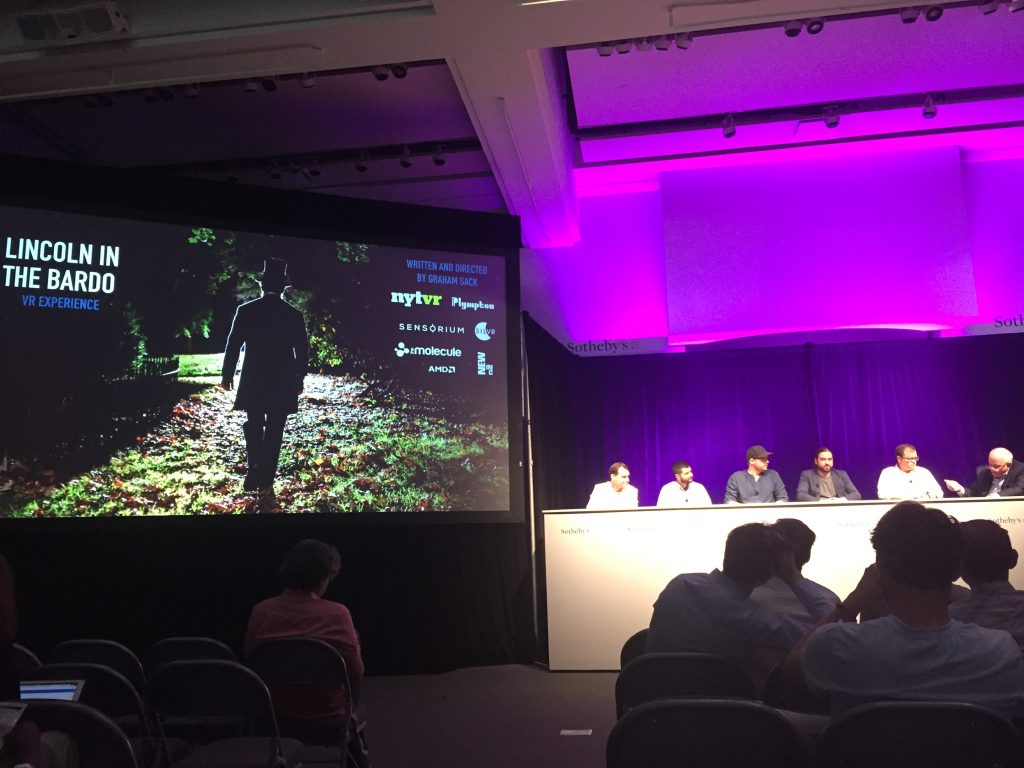
In this immersive narrative short, President Lincoln pays a nighttime visit to the haunted cemetery in which his beloved son has just been laid to rest. Based on “Lincoln in the Bardo,” the new novel by George Saunders.
Somewhat related to the VR event, Sotheby’s also had a pop-up gallery, called BUNKER, “which since 2014 has featured artists who collaborate with technology to create code-driven sculpture, augmented reality and virtual installation”. I took some time to check it out. There weren’t that many projects, but here are few projects I especially liked.
One that was really clever used the cassette frames and an audio output. Since it was using headphones, a video would have only caught half of it. So, I didn’t capture it at all.
The installation will be at Sotheby’s until July 20, 2017.
In February, I watched a EuroNews report about a South African artist named William Kentridge, whose work is being shown in Copenhagen, Denmark. Here’s the article video.
Link to the article on EuroNews.com
I was very interested in learning more about the artist after seeing that he uses a combination of video installations, animation, and live action. As seen in clips in the article, he’s also not afraid to explore the difficult history of his country. As MoMA puts it, “Dealing with subjects as sobering as apartheid, colonialism, and totalitarianism, his work is often imbued with dreamy, lyrical undertones or comedic bits of self-deprecation that render his powerful messages both alluring and ambivalent.”
This can be seen in the following video, which is embedded in the text of the article. It’s like a New Orleans marching band, set in a lyrically dystopian world.
Season’s #art event in #Denmark: William Kentridge’s #ThickTime #exhibition at #Louisiana #Museum is now open! https://t.co/Stofw9gun0 pic.twitter.com/vdb4sf8dKI
— cityartnow (@cityartnow) February 16, 2017
When I looked up more about the artist, I was surprised to find that he was not ethnically African, because as the video shows he is using black subjects in the artwork. In my experience, it’s not that common to find an artist using the experience of another ethnicity in their artwork, although it does occur in decorative arts, photography, and performing arts.
I suppose performing artists do this because music, dance, and theater are somewhat universally accessible for all people. Photography is a little different, in that the photographer has to take a documentarian or voyeuristic point of view, as opposed to being part of the art. Wikipedia explains that Kentridge is Jewish, with attorney parents that fought against apartheid. Perhaps he felt like both an outsider, voyeur-documentarian and part of the struggle in South Africa.
What I find revealing is how well Kentridge’s use of African subjects shows his strong empathy and understanding of apartheid and this difficult period of South African history. He says, in Pain & Suffering, shown on art:21, that artists use the pain and suffering of others for their work.
Wikipedia explains one of his animation methods:
“in all of his animated works do the concepts of time and change comprise a major theme. He conveys it through his erasure technique, which contrasts with conventional cel-shaded animation, whose seamlessness de-emphasizes the fact that it is actually a succession of hand-drawn images. This he implements by drawing a key frame, erasing certain areas of it, re-drawing them and thus creating the next frame. He is able in this way to create as many frames as he wants based on the original key frame simply by erasing small sections. Traces of what has been erased are still visible to the viewer; as the films unfold, a sense of fading memory or the passing of time and the traces it leaves behind are portrayed.”
The video above doesn’t show one of this animation style very well, but his style can be seen in other clips. He also uses stop-motion.
Aside from animation, he uses live video and different masking and editing effects in his work. Here’s a video of him, from the Danish museum, the Louisiana, interviewing himself:
I won’t be in Copenhagen anytime soon. But if you’re interested in learning more about William Kentridge, there are examples of his work online.
Of course, there is the Louisiana Museum that is currently holding a William Kentridge exhibition. It looks like an interesting exhibit. The site is in Danish, but Google should be able to translate.
art:21 has the most examples of him working and explaining his process. There are several clips of some of his video/media pieces.
MoMA has an archival page documenting his 2010 exhibition, Five Themes. Also still available is a flash-site that contains many examples of his work and his process.
Wikipedia also has plenty of information about Kentridge, from his bio, to listing his films and many exhibitions around the world. There are also external links, if you’re interested even more information about this artist.
In August 2017, Artsy.net reached out to me to inform me of their web page on William Kentridge.
Our William Kentridge page provides visitors with Kentridge‘s bio, over 350 of his works, exclusive articles, and up-to-date Kentridge exhibition listings. The page also includes related artists and categories, allowing viewers to discover art beyond our Kentridge page.
I took a look and it does have a lot of great information about this artist, including many images. So if you are looking for additional info, take a look!
Over the past week or two, I’ve been collecting a lot more information about body image, or the body, in relation to artists’ works. Particularly, scholars who’ve written about the body, artists who use the body in their art, or artworks featuring the body or body image. It’s been actually quite interesting to look through all of this information. Here’s a list of what I’ve come across below. For some of them, I’ve written some short thoughts or descriptions about what I’ve seen or understood.
Marina Abramovic, (performance art) Rhythm 0:
In Rhythm 0, Abramovic placed about 70 articles of pain and pleasure in front of her, and then stood as an object while the audience manipulated the objects with her body. Starting out innocently, the performance turned more malicious and aggressive as audience members began to cut her skin, tore her clothes, fondled her breasts and even put a loaded gun to her head. (She provided the gun and the bullet.) When a guard announced that the performance had ended, Abramovic, now teary eyed, walked towards her audience as one of them, yet many or all of them literally ran away. The artwork questions how we objectify each other and tests the limits of our civility towards each other.
Carolee Schneemann, (performance art) Interior Scroll:

In Interior scroll, Schneeman reads a paper scroll as she simultaneously pulls it from her vagina. Definitely an act of reclaiming her body and her ownership of her sex.
“I thought of the vagina in many ways– physically, conceptually: as a sculptural form, an architectural referent, the sources of sacred knowledge, ecstasy, birth passage, transformation.”
Barbara Kruger, (photography collage) including Your Gaze Hits the Side of My Face, Your Body is a Battleground, You Are Not Yourself: 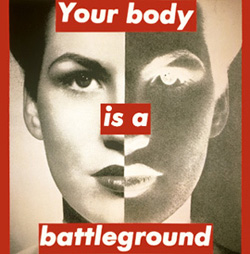
I have to admit that I don’t quite get the art, but I really like the phrase, “Your Body is a Battleground”. It represents so well how strongly we have to remain conscious of the fact that we have a right to not look like how the media, fashion, and the contemporary body aesthetic tells us we should look.
Cindy Sherman, (performance/photography) including Untitled Film Stills and other photos series in which she dresses up as other people/identities:
This is an amazing selection of images that challenge identity and image. When I looked through these photos, I thought “Who are we really?” Is our identity ours, or do we in some way embody the identity of others? I’m still not so sure I know what Cindy Sherman really looks like….
Link
Pipilotti Rist (video performance) PickelPorno:
Pipilotti Rist apparently made her mark with this video. It features a man and a woman, some nudity, and a fish-eye camera, along with other imagery; some sexual. At first, I really didn’t like the video because not only did I not see any intention, the production quality is fairly poor. (I guess I’m used to HD!) I turned it off, and then returned to watch it. After a while, I found enjoyment in the unusual or overlooked perspective views of the body. For instance, with the camera so close to the body, human skin is seen as it really is – hairy and imperfect. I found that while I often wanted to turn away, I couldn’t. It was like a visual exploration of the body, reminiscent of the way 2 lovers explore each other’s bodies.
View film on YouTube
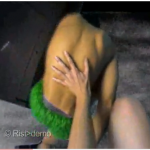
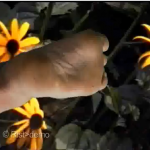
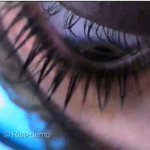
Ana Mendieta (performance/experimental) Cosmetic Facial Variations:
She was a Cuban artist whose work included a series of “Cosmetic Facial Variations, such as looking ambiguously male and/or female.

Orlan (‘whose medium is plastic surgery – commenting on the world of artificial changes to the body to be perfect/beautiful’):

Seems as though she has undergone a series of plastic surgeries, and then uses not only the surgical results as artwork, but also the surgery videos. She also seems to want to push our interpretations of chasteness and sexuality in religion, and the openness, or lack of openness, of female sexuality.
Laura Mulvey, (scholarly writing) “Visual Pleasure and Narrative Cinema PDF”. “A seminal work on ‘the gaze’ – how female identity is structured through the male gaze”:
Points
Interview with Vanessa Bancroft, from The GuardianInterview with Vanessa Bancroft:

The artist makes performance pieces featuring up to 100 semi-nude and nude models, many of whom resemble the artist and/or have eating disorders. Bancroft admits that she has been struggling with eating disorders (exercise bulimia) since she was 12.
Janine Antoni (process) Gnaw:

The artist took two blocks of chocolate and lard, bit into them piece by piece, and then made a chocolate box and lipstick out of the pieces she’d bitten. I appreciated this for the repurposing of the lard and chocolate, but biting into lard feels viscerally creepy. Detailed description from MoMA and from Brooklyn Museum. Link
Chris Woebken (design, technology)Animal Perception Helmets:
I love that these seem so game-like, fun, and goofy. My favorite is the ant, because it’s such an abstract view of the world. It also reminds me of Pipilotti Rist’s work, Pickelporno. I’m considering the use of magnification in my project.
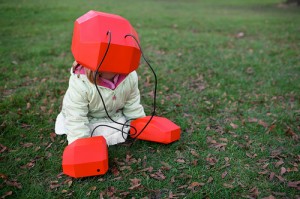
Simon Høgsberg (photography) Faces of New York:
A photography project featuring 10 New Yorkers who Høgsberg found immediately fascinating after a month of looking, 7 hours a day.
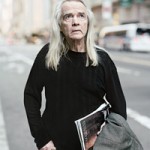
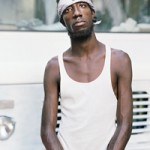
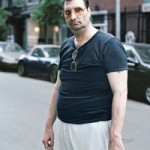 Link
Link
Phillip (“Mr Toledano”) Toledano (photography) A New Kind of Beauty:
Features a series of still photographs of people who have clearly undergone some type of plastic surgery. The people themselves did not look “normal” – as in, their plastic surgery procedure(s) was very obvious – but their portraits were beautiful. For the most part, I found that many of them looked alike, both men and women, as if the same facial aesthetic was the same for both men and women. They seemed so much like a new species of hermaphroditic, male/female neutral people, I wanted their names to be more exotic than just Steve, Yvette, or Michael….
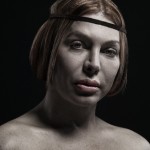
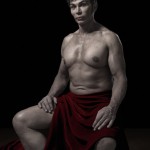
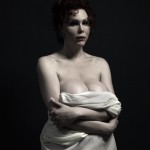
Something-Fishy.org
A few links on eating disorders in men and ballet dancers. (Note: There are few reference links provided, so the factualness of many of these statements cannot be easily verified, but the anecdotal information is useful.)
“A ballet dancer is very aware of what her body looks like. At each practice she attends she wears skin-tight clothes and dances strenuously in front of large mirrors. A dancer has to look at herself for many hours in a day and this can cause a realization in the dancer. The general public may look in the mirror for a few minutes a day, hardly aware of what they really look like, but a dancer has no choice but to stand in front of a mirror and compare herself with others in the room…. The truth is as stated by a dancer, ‘In the real world people who are not thin do not get jobs.’ “
Emma Hack (skin illustrator, photographer, sculptor), Various skin illustrations:

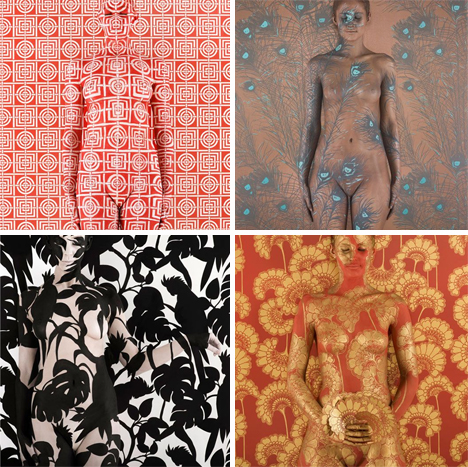
I just came across this artists work and found the camouflage aspect of her art really interesting and beautiful. And, I enjoyed how the work focused less on the body and more of the body’s disappearance into the art. Her website is emmahackartist.com.
Genesis 1:27 God Created man in his own image:
Lastly, I was just listening to the radio the other day, and there was a guy talking about homosexuality and tolerance. The man speaking was relatively conservatively religious, except that he advocated for tolerance towards gays and lesbians (though not towards gay marriage.) In any case, he quoted the Bible and it seemed to fit with my body image interest, so I’ll just add it here, too. Link.
So God created man in his own image, in the image of God created he him; male and female created he them.